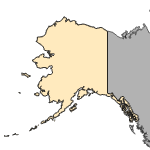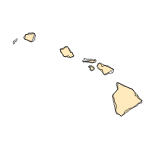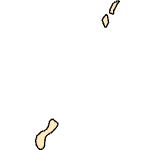Cuora flavomarginata
(Yellow-margined Box Turtle)
Reptiles-Turtles
Exotic |
|
Common name: Yellow-margined Box Turtle
Synonyms and Other Names: Cistoclemmys flavomarginata, Chinese box turtle
Taxonomy: available through
www.itis.gov
Identification: C. flavomarginata exhibits a dark brown carapace often with a yellow vertebral stripe and yellow to reddish edges on the marginal scutes and adjacent plastral scutes. This characteristic yields the name yellow-margined box turtle. The carapace is highly domed and reaches 17 cm long. The head is gray to pale green on top with yellow sides (Conner and Wheeler, 1998; Oakland Zoo, 2003).
Size: Carpace length up to 17 cm
Native Range: Southern China, Taiwan and the Ryukyu Islands (Cardoza et al., 1993).



|

Alaska |

Hawaii |

Puerto Rico &
Virgin Islands |

Guam Saipan |
Hydrologic Unit Codes (HUCs) Explained
Interactive maps: Point Distribution Maps
Nonindigenous Occurrences:
Table 1. States with nonindigenous occurrences, the earliest and latest observations in each state, and the tally and names of HUCs with observations†. Names and dates are hyperlinked to their relevant specimen records. The list of references for all nonindigenous occurrences of Cuora flavomarginata are found here.
Table last updated 11/21/2024
† Populations may not be currently present.
Means of Introduction: Both occurrences are presumed to be released or escaped pets (Cardoza et al., 1993).
Status: Not established. These isolated captures do not indicate an established, breeding population (Cardoza et al., 1993).
Impact of Introduction: None since a population did not establish (Cardoza et al., 1993). C. flavomarginata preys upon snails, worms and other invertebrates (Oakland Zoo, 2003).
References: (click for full references)
Cardoza, J.E., G.S. Jones, T.W. French, and D.B. Halliwell. 1993. Exotic and Translocated Vertebrates of Massachusetts. Fauna of Massachusetts Series. Massachusetts Division of Fisheries and Wildlife, Westborough. 95 pp.
Conner, M. J. and V. Wheeler. 1998. The Chinese Box Turtle, Cistoclemmys flavomarginata (online). Tortuga Gazette 34(10)1-7. Available at URL: http://www.tortoise.org/archives/cflavo.html.
Oakland Zoo. 2003. Animals A-Z:Chinese Box Turtle (online). Available at URL: http://www.oaklandzoo.org/atoz/azchbxtr.html.
Author:
McKercher, E.
Revision Date: 1/16/2003
Citation Information:
McKercher, E., 2024, Cuora flavomarginata (Gray, 1863): U.S. Geological Survey, Nonindigenous Aquatic Species Database, Gainesville, FL, https://nas.er.usgs.gov/queries/FactSheet.aspx?SpeciesID=1236, Revision Date: 1/16/2003, Access Date: 11/21/2024
This information is preliminary or provisional and is subject to revision. It is being provided to meet the need for timely best science. The information has not received final approval by the U.S. Geological Survey (USGS) and is provided on the condition that neither the USGS nor the U.S. Government shall be held liable for any damages resulting from the authorized or unauthorized use of the information.